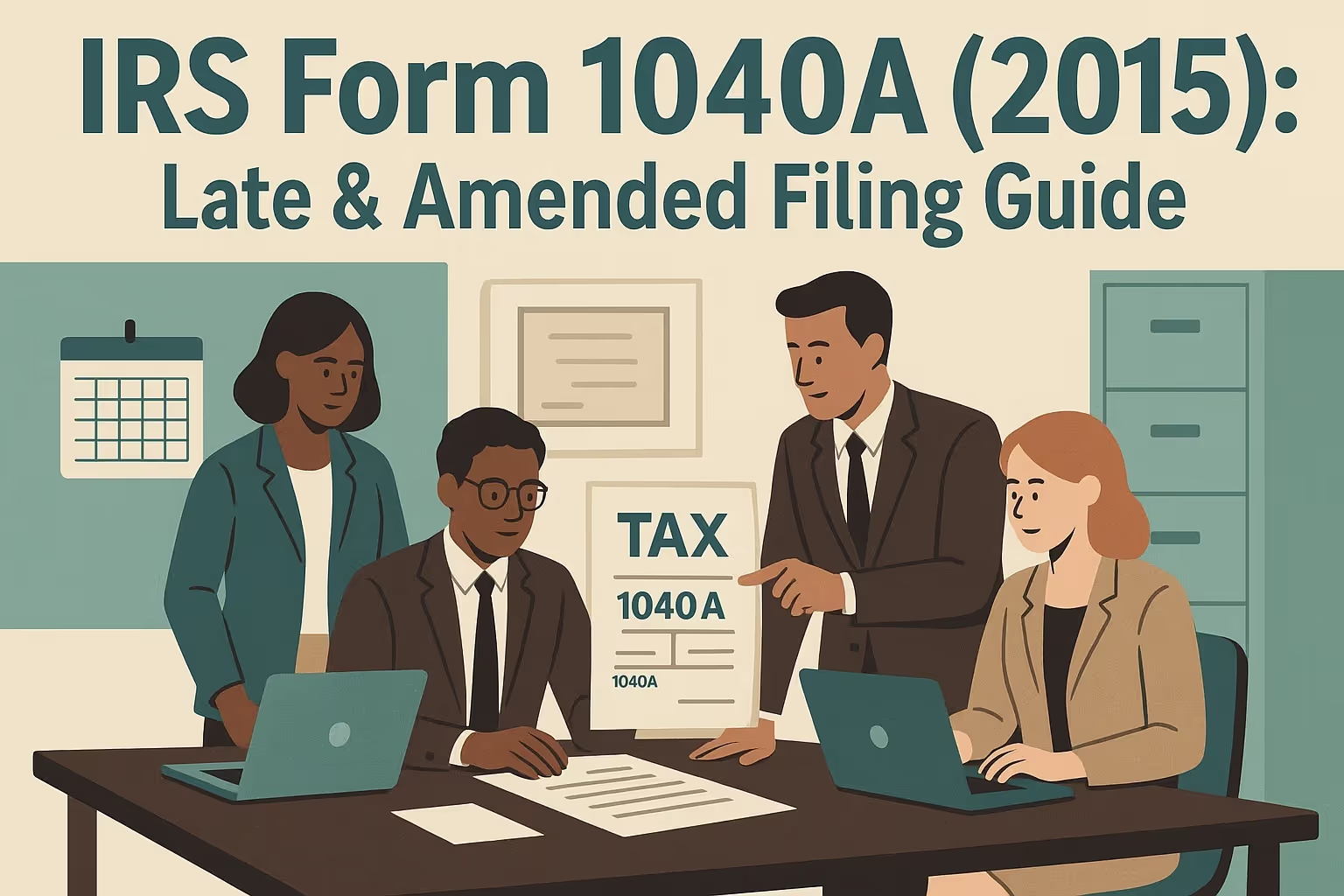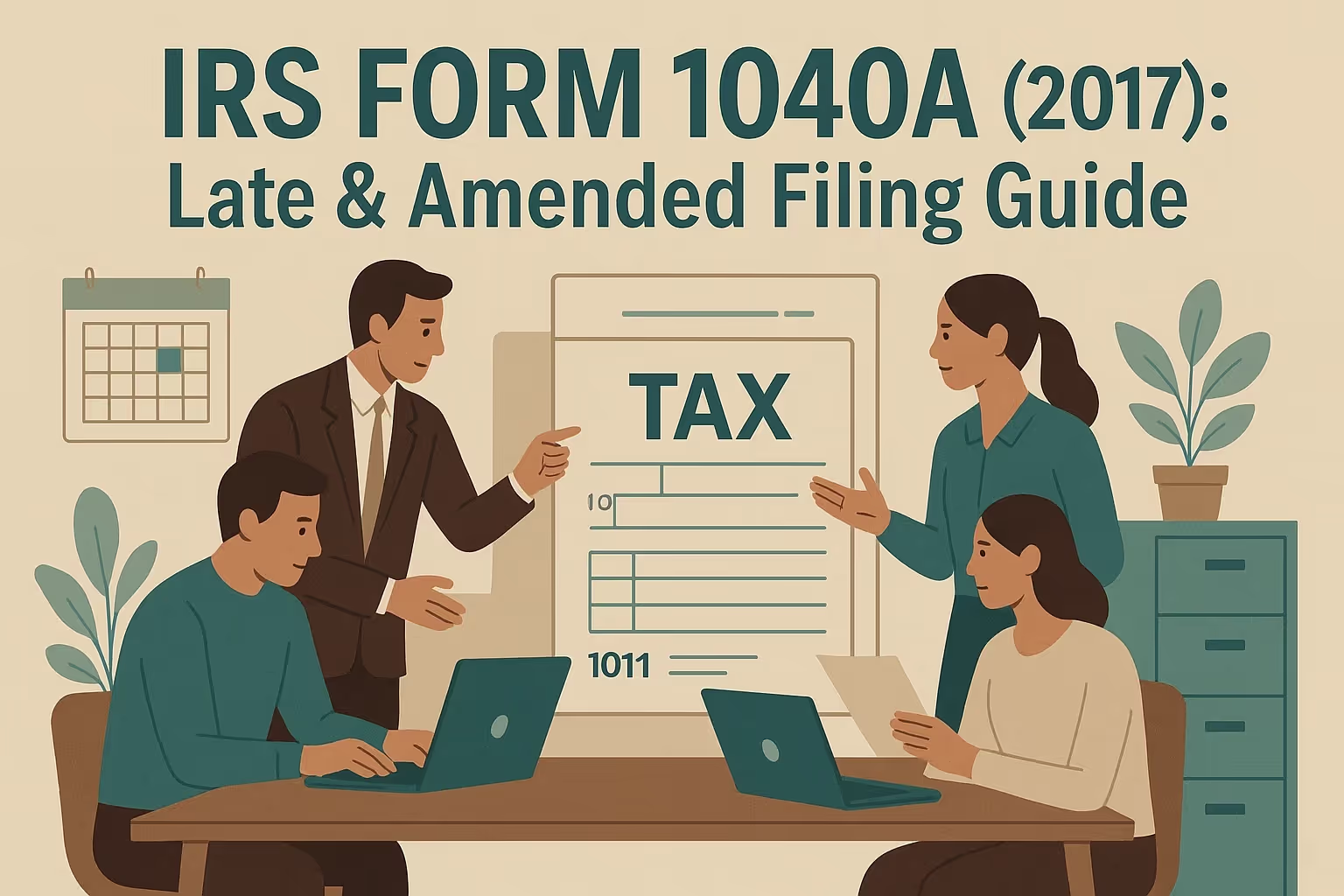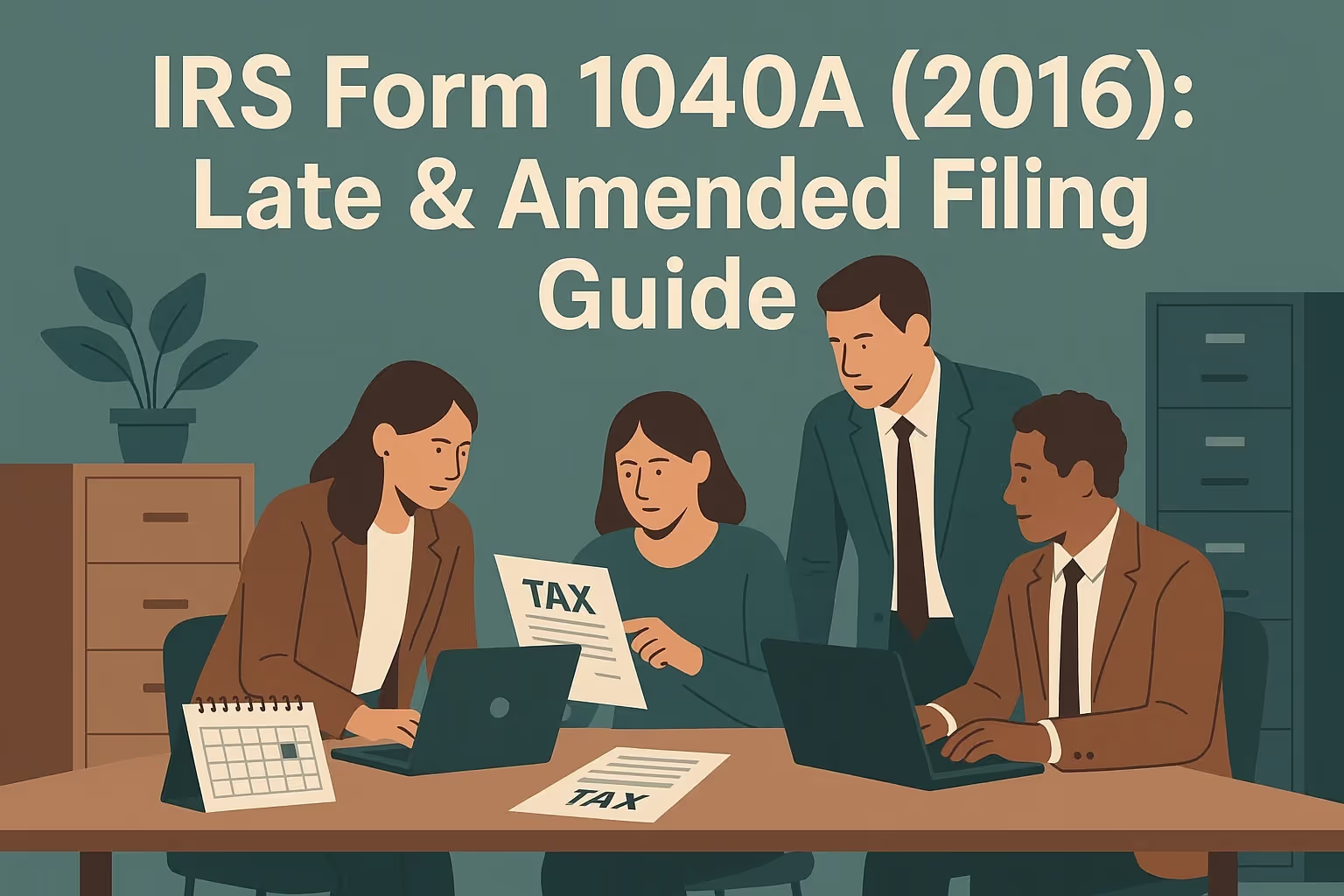
The 2019 filing year introduced a redesigned federal income tax return process that simplified reporting for many individuals. The new approach aimed to make completing and submitting required forms easier while keeping key details clear and accurate. Understanding these changes ensured compliance with federal taxes and reduced taxpayer filing errors.
For 2019, Form 1040 replaced prior versions, including the shorter Form 1040A. Taxpayers needed to review updated instructions, gather their documents, and determine whether they should claim standard deductions or consider itemizing. This decision often shaped how much money was owed or refunded after filing. Choosing correctly prevented delays and improved accuracy.
Filing required close attention to wages, interest, credits, and deductions. The Internal Revenue Service (IRS) emphasized accuracy because mistakes could delay a refund or increase waiting time. Following the proper process step by step ensured each return was completed correctly. This guide provides structured instructions to help taxpayers prepare, file, and respond to questions that arise during the year.
Overview of the Federal Income Tax Return
Understanding the federal income tax return is the foundation of the filing process. It determines how income, deductions, and credits affect taxes owed or refunds received.
Purpose of the Federal Income Tax Return
- Reporting requirement: Every eligible individual must file a report of wages, interest, and other taxable income earned during the year.
- Determine liability: The return calculates the amount in federal taxes paid and whether more is owed or a refund is due.
- IRS review: Submitting a return allows the IRS to verify income reported by the employer and other payers, ensuring accurate totals.
Forms Used for 2019
- Form 1040: The main form for individual taxpayers, simplified into two pages with most schedules attached as needed.
- Form 1040-SR: Introduced for seniors, this version used larger text and included a standard deduction chart on the first page.
- Schedules 1, 2, and 3: These handled additional income, taxes, and credits, replacing six schedules used in previous years.
What Is New for 2019 Federal Taxes
The 2019 tax year introduced essential updates to the preparation of returns. These changes streamlined the process and reduced taxpayers' errors.
Form Changes and Updates
- Redesigned structure: The form was simplified to two pages, reducing confusion and helping taxpayers complete returns more efficiently.
- Schedule reduction: The IRS cut the number of schedules from six to three, improving organization and limiting unnecessary complexity.
- 1040-SR option: Seniors received a more accessible form to assist older taxpayers in preparing their returns more accurately.
Standard Deduction Adjustments
- Single or Married Filing Separately: For 2019, taxpayers using this status received a $12,200 standard deduction, reducing taxable income and simplifying the process for individuals with straightforward financial situations.
- Married Filing Jointly or Qualifying Widow(er): Couples or widowed taxpayers in this category could claim a $24,400 deduction, offering significant relief and ensuring larger household expenses were accounted for appropriately.
- Head of Household: This status provided an $18,350 deduction, offering meaningful benefits for individuals supporting dependents and ensuring additional tax relief when maintaining a home for qualifying family members.
Healthcare and Virtual Currency Changes
- Shared responsibility payment: The individual mandate penalty for lacking health insurance was removed starting in 2019.
- Virtual currency reporting: Taxpayers must answer whether they received or exchanged virtual currency, ensuring the IRS tracks such activity.
Filing Status and Eligibility
Before starting the process, taxpayers must choose the correct filing status. Filing status affects adjusted gross income, deductions, and final tax liability.
Common Filing Status Options
- Single: This is for individuals who are not married on the last day of the year. It is generally used when only one personal income is reported.
- Married Filing Jointly: Used when both spouses combine income and deductions into a single return for the IRS to review.
- Married Filing Separately: Selected when spouses keep income separate; sometimes increases taxes but may protect one from another’s liability.
- Head of Household: Applies when maintaining a home for a qualifying dependent and paying more than half of the household expenses.
- Qualifying Widow(er): Allows a surviving spouse with a dependent child to use joint filing rates for two years after the spouse’s death.
Security Check During Filing
Completing a return often requires a security check to confirm that the filer is human. This feature prevents fraud and misuse of online systems.
Why a Security Check Is Needed
- Captcha proves identity: A captcha proves the return is submitted by a person, not an automated system attempting unauthorized access.
- Prevent malware threats: Verifications help detect infected devices that might compromise the filing process or spread a virus within the network.
- Protect personal data: A security check ensures personal connection details remain private, reducing risks from misconfigured or infected devices.
Troubleshooting Access Issues
- Temporary access blocks: The IRS system may restrict entry when misconfigured devices or suspicious IP activity is detected.
- Run an antivirus scan: Taxpayers should run an antivirus scan to find and remove malware that could interfere with online submissions.
- Contact a network administrator: If filing from an office or shared network, a network administrator may need to resolve access issues before resuming.
How to File Your Individual Income Tax Return
Filing your income tax return requires a clear process. The following steps help ensure all forms are complete, accurate, and submitted on time.
Step 1: Choose Your Filing Status
Selecting the correct filing status determines the standard deduction and tax brackets. Accuracy is important because this step affects liability and refund size.
Step 2: Enter Personal Information
Provide exact names, addresses, and Social Security numbers. Mistakes in these details can delay processing and may affect when a refund is received.
Step 3: Report Income
List wages, interest, dividends, pensions, Social Security benefits, and other money earned. The IRS verifies reported amounts against forms received from employers.
Step 4: Calculate Adjusted Gross Income
Subtract allowable adjustments from total income to reach adjusted gross income. This number determines eligibility for deductions, credits, and other tax benefits.
Step 5: Determine Deduction Method
Decide between itemizing or using the standard deduction. Itemizing applies when allowable expenses exceed the standard amount, potentially reducing taxes owed further.
Step 6: Figure Total Tax and Credits
Calculate income tax using tax tables or software. Apply credits such as earned income or child tax credit to reduce overall liability and improve refund chances.
Step 7: Compare Payments With Liability
Add all federal taxes withheld and any estimated payments. Compare this total to the liability calculated to determine whether you will pay or receive money.
Step 8: Submit the Return
File electronically for faster results, or mail paper forms if preferred. The IRS recommends e-filing because processing is quicker, secure, and reduces common errors.
How to File a Federal Income Tax Return
After preparing the necessary forms and calculations, taxpayers must decide how to file. The method chosen can affect processing speed, security, and refund arrival time.
Electronic Filing (E-File)
- Faster processing: E-filed returns usually complete within weeks, resulting in faster refunds than mailed returns.
- Secure submission: Encryption protects data during transmission, helping prevent infected devices or malware from intercepting personal information.
- Immediate confirmation: The IRS sends notification that the return was received, eliminating questions about whether the forms arrived safely.
Paper Filing
- Traditional method: Paper returns remain acceptable, though they require more time and may increase refund waiting periods.
- Mailed forms: Taxpayers must send returns to the address listed in IRS instructions, which varies by location and payment status.
- Longer processing: Paper returns often take six to eight weeks before a refund is issued, delaying access to the owed money.
Payments and Federal Taxes
Submitting a return does not always mean a refund is due. Depending on how much was withheld throughout the year, some taxpayers must pay additional federal taxes.
Payment Deadlines and Extensions
- Due date: Federal taxes for the 2019 return were originally due April 15, 2020, unless an extension was requested correctly.
- Extension limits: Filing an extension provides more time to submit forms, but does not extend the time to pay taxes owed.
- Failure to pay: Failure to send payment on time can result in penalties and interest, increasing the total amount due to the IRS.
Payment Methods
- Direct Pay: It allows direct transfers from a bank account to the IRS at no additional cost, making the process free and secure.
- EFTPS system: A federal electronic network where taxpayers can schedule payments online or by phone, often used for business returns.
- Card payments: Using a credit or debit card may be convenient, but processing fees apply and should be considered before choosing this option.
- Checks and money orders: Traditional methods remain available, but taxpayers must include a payment voucher and mail it to the correct address.
Payment Plans
- Short-term plan: Provides up to 120 days to pay the full balance. Interest still accrues, but fees are lower compared to long-term options.
- Installment agreement: Monthly payments over time help taxpayers manage larger balances, though setup fees and ongoing interest charges apply.
- IRS contact: If unable to pay, they should contact the IRS quickly to prevent collection actions and establish a payment arrangement.
Required Schedules and Attachments
Not every taxpayer will need additional schedules, but certain income, credits, or taxes require attaching supporting forms to the federal income tax return.
Schedule 1: Additional Income and Adjustments
- Income types: Business profits, rental income, unemployment compensation, and gambling winnings must be listed on Schedule 1.
- Adjustments allowed: Educator expenses, student loan interest, and IRA contributions reduce adjusted gross income when entered here.
Schedule 2: Additional Taxes
- Alternative Minimum Tax: Some higher-income filers must calculate and include this additional amount.
- Self-employment tax: Independent workers must report and pay Social Security and Medicare contributions on Schedule 2.
- Other obligations: This schedule may also be required to repay excess premium tax credits and household employment taxes.
Schedule 3: Credits and Other Payments
- Nonrefundable credits: Includes education credits, child and dependent care credits, and retirement savings contributions.
- Refundable credits: Earned income and additional child tax credit can increase refund amounts beyond taxes paid.
- Payments recorded: Estimated tax payments or excess Social Security withholding also belong on this schedule.
Common Mistakes to Avoid on a Tax Return
Even minor errors can delay refunds or trigger IRS notices. Reviewing details before submission helps prevent costly mistakes.
Identity and Filing Errors
- Incorrect Social Security numbers: Every number must match official Social Security records. Even a single-digit error can cause immediate rejection and delay the entire tax return process.
- Wrong filing status: Selecting the wrong filing status can significantly alter tax brackets, deductions, and refund eligibility, leading to inaccurate calculations and possible overpayment of federal taxes.
- Missing signatures: The IRS automatically rejects unsigned returns. Missing signatures render a return incomplete, preventing processing and requiring resubmission, which increases the waiting time for any expected refund.
Income and Math Mistakes
- Unreported income: All wages, tips, and interest must be listed, even if not all forms were received from employers or banks.
- Calculation errors: Manual math increases the risk of mistakes. Using tax software or e-filing reduces errors and ensures correct totals.
- Wrong lines used: Entering amounts on incorrect form lines may alter adjusted gross income and final liability.
Bank and Virtual Currency Issues
- Inaccurate account numbers: Incorrect routing or account details may delay processing direct deposit refunds.
- Shared network filing: Submitting from a misconfigured or infected device on a shared network may create filing issues or security risks.
- Virtual currency question: Taxpayers must respond accurately if they held or exchanged digital currency during the year.
Zero-Activity or Dormant Year Guidance
Not all taxpayers have a regular income each year. Even with low or no activity, it is essential to determine whether a filing requirement exists.
Filing Requirement Thresholds
- Age under 65: In 2019, single individuals with annual incomes exceeding $12,200 were required to file, ensuring compliance with federal tax filing requirements.
- Age 65 or older: The filing threshold for single individuals increased to $13,850. This adjustment provided added relief for older taxpayers with limited annual income.
- Married couples: Couples had to file if their combined income exceeded $24,400. The required threshold increased even further if both spouses were 65 or older.
Reasons to File With Minimal Income
- Refund eligibility: Federal income tax withheld during the year may be refunded even if income was below filing thresholds.
- Claim credits: Refundable credits, such as earned or education credit, may generate refunds even when no federal income tax liability existed.
- Future records: Filing maintains updated IRS records, which may help prevent questions or disputes in the coming years.
Special Situations
- Self-employment earnings: Net income of $400 or more requires filing to pay Social Security and Medicare taxes.
- Premium tax credits: Individuals who received advance credits must file to reconcile amounts, regardless of overall income.
- Retirement distributions: Certain distributions from retirement accounts, pensions, or health savings accounts (HSAs) must be reported, even for those with low incomes.
First-Time Filer Tips
New filers often face uncertainty. Taking organized steps and knowing standard practices helps reduce stress and improve accuracy.
Understanding Tax Documents
- Form W-2: This form reports wages earned and federal taxes withheld by your employer, ensuring accurate income tax reporting and proper credit for payments already made.
- Form 1099-INT: This document reports taxable interest income received from banks or financial institutions, helping taxpayers include all sources of money earned during the year.
- Form 1099-DIV: This form reports dividend income, separated into qualified and ordinary categories. It allows the IRS to determine the proper tax treatment of investments for accurate return preparation.
Choosing Standard Deduction or Itemizing
- Standard deduction: Most first-time filers select this option since it requires fewer forms, simplifies the process, and often reduces taxes more than itemizing deductions.
- Itemizing deductions: This option is chosen when eligible expenses, such as mortgage interest, medical costs, or charitable contributions, exceed the standard deduction amount.
- Decision importance: Selecting the wrong method may result in paying unnecessary taxes or missing out on a larger refund, directly affecting financial outcomes.
Recordkeeping for Future Years
- Retain copies: Taxpayers should keep a full copy of the return and forms received to ensure they have proof of information submitted to the IRS.
- Supporting records: Bank statements, receipts, and other supporting documents must be kept for at least three years to verify credits, deductions, or income reported.
- Preventing issues: Keeping good records reduces errors, helps respond to IRS questions, ensures accurate future returns, and avoids calculation errors.
Frequently Asked Questions
What is the difference between Form 1040 and Form 1040-SR for the 2019 tax year?
Form 1040-SR was introduced for taxpayers aged 65 or older. It includes the same information as Form 1040 but features larger print and a clear standard deduction chart. This design helps seniors prepare their federal income tax return more easily. Both forms calculate adjusted gross income, deductions, credits, and refund eligibility using the same process.
When should I choose the standard deduction instead of itemizing deductions for 2019?
Most individuals benefit from the standard deduction because it simplifies the process and avoids extra forms. For 2019, deduction amounts were $12,200 for single filers, $24,400 for joint filers, and $18,350 for head of household. Itemizing should be considered if eligible expenses exceed these limits, since this option can lower federal taxes and improve refund results.
Do I need to file a 2019 return if my only income was Social Security benefits?
Filing is not always required when Social Security benefits are the only income source. Generally, if half of your benefits combined with other income exceeded $25,000 ($32,000 for joint filers), then a return was required. Filing can still be helpful if federal income tax was withheld, since this may generate a refund even when income was below thresholds.
How do I answer the 2019 virtual currency question on Form 1040?
The IRS required every filer to answer the virtual currency question in 2019. Select “Yes” if you received, sold, exchanged, or acquired cryptocurrency. Select “No” if you had no such activity during the year. Answering accurately is important because the IRS uses this information to determine compliance with federal taxes related to digital asset transactions.
What are my options if I cannot pay my full 2019 tax by the original due date?
If you cannot pay the full balance, you may request a payment plan from the IRS. Short-term arrangements allow up to 120 days, while long-term installment agreements extend payments. Interest and penalties still apply, but establishing a plan prevents stronger collection measures. Contacting the IRS promptly helps resolve the issue and reduces financial pressure in the future.
Is e-filing safe, and how long will a 2019 refund typically take with direct deposit?
E-filing is secure because the IRS uses encryption and system safeguards to prevent malware or virus interference. Electronic returns are processed faster than paper, with most refunds arriving in fewer than 21 days. Direct deposit further speeds the process, ensuring refund amounts are deposited securely into the designated account. Paper returns take much longer, sometimes extending waiting periods by six to eight weeks.
How can I check the status of my refund after submitting my 2019 return?
Refund status can be checked online through the IRS “Where’s My Refund?” tool or the automated phone line. To complete the security check, you will need your Social Security number, filing status, and exact refund amount. This process confirms your identity, ensures your device is not misconfigured, and provides updated information on the refund timeline.


























